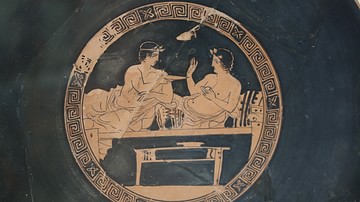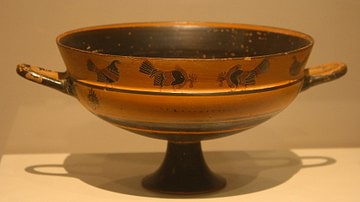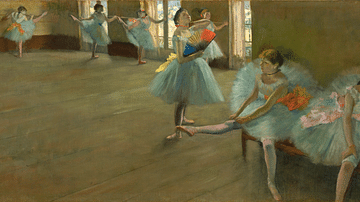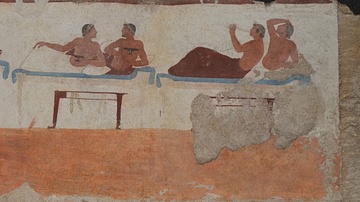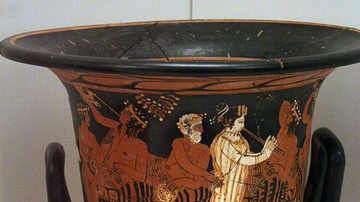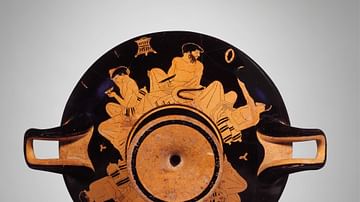Illustration
Attic black-figure cup from c. 580-560 BCE, attributed to the Painter of Copenhagen 103, in J. Paul Getty Museum 79.AE.128.
Komos-dancing was a common behaviour after a symposium. The now properly drunk guests would rush out in a crazy dance that involved leaps and jumps and loose hand and arm shakes and gestures. This complex picture of drinking climax was a popular subject for decorating wine cups. It appears on many black-figure and red-figure cups and other ceramic vessels produced in the mainland Greece and beyond.
In ancient writings, the word “komos” means a revel particularly in honour of Dionysos. It is an erroneous derivation of “kome” meaning an unwalled village, and, through its connection with the collective, mimetic, and Dionysian dance, became the root of “komoidia” or “comedy”.
References
World History Encyclopedia is an Amazon Associate and earns a commission on qualifying book purchases.Cite This Work
APA Style
Museum, G. (2020, October 15). Komast Dancers on an Attic Black-figure Cup. World History Encyclopedia. Retrieved from https://www.worldhistory.org/image/12886/komast-dancers-on-an-attic-black-figure-cup/
Chicago Style
Museum, Getty. "Komast Dancers on an Attic Black-figure Cup." World History Encyclopedia. Last modified October 15, 2020. https://www.worldhistory.org/image/12886/komast-dancers-on-an-attic-black-figure-cup/.
MLA Style
Museum, Getty. "Komast Dancers on an Attic Black-figure Cup." World History Encyclopedia. World History Encyclopedia, 15 Oct 2020, https://www.worldhistory.org/image/12886/komast-dancers-on-an-attic-black-figure-cup/. Web. 18 Apr 2025.

